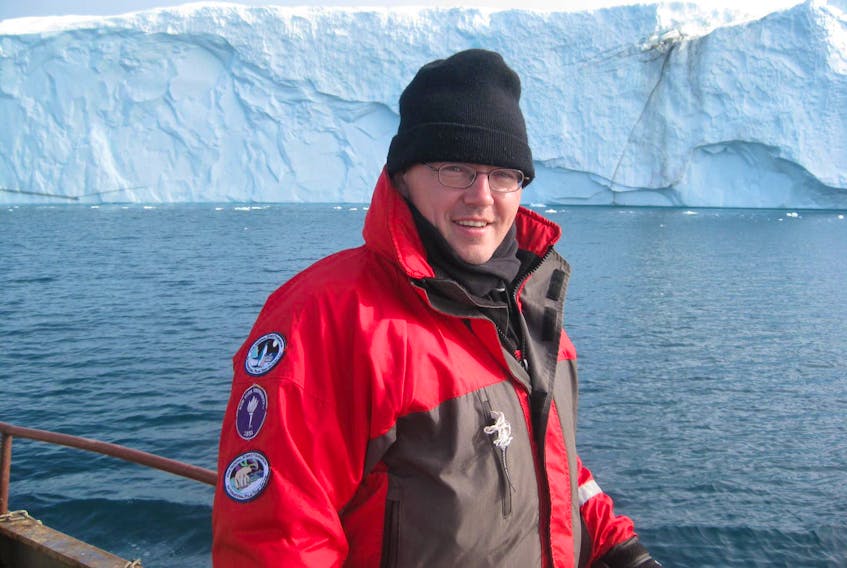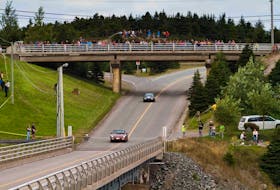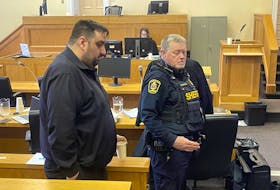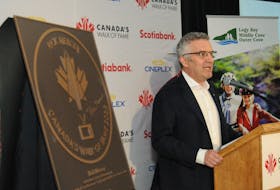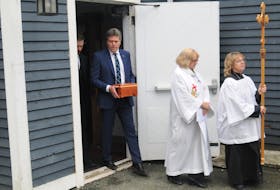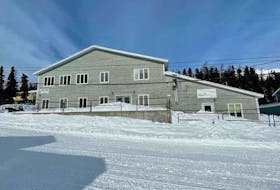ST. JOHN'S, N.L. — David Holland grew up playing ice hockey in St. John’s.
Today, the New York University (NYU) professor and researcher is spending Christmas on a different kind of ice — Antarctica.
He’s studying the effect of ocean temperatures on Antarctica’s Thwaites Glacier.
According to Holland, the glacier is “the most important place on Earth to study sea level change.”
“That’s the most rapidly changing glacier now on Earth, and it contains a lot of ice that, if it accelerates — which it seems to be doing — would have a significant change in sea level of a metre or more.”
Holland spoke with The Telegram by satellite phone from the remote marine ice sheet.
With a team of 24 people, he will drill a kilometre-deep hole through the Florida-sized glacier, then install an instrument to collect ocean temperature and other data.
“We’re going to explore a part of the planet that nobody’s ever seen before, and make observations that nobody’s ever made before, and on top of all that is the science, which is really interesting, which is: will sea level change big time in this century, or not?
“And our team have a really good crack at answering that over the next few years, and so that’s really important because people make a lot of noise about sea level change, and how it’s going to change the world. Well, we need to be aware of that, but let’s not get ahead of the science — let’s make sure the science is out front and guiding this.”
The research expedition is on a tight timeline, worsened already by a month of weather delays at the start of the trip in November. The group has to leave with the U.S. Air Force on Feb. 1, or else they won’t be able to leave at all when stormy winter weather sets in.
Race to collect data
The melting of the glacier is visible from space.
“I’m standing on the surface, but the surface is dropping by metres and metres every year,” said Holland.
“It’s the equivalent of if Newfoundland every year was like a metre or several metres lower. You’d notice it.”
He said the theory is that warm water is moving underneath the ice, melting the glacier from the bottom. However, they need to actually observe that.
While Antarctica is far from Newfoundland, Holland said melting there could affect low-lying places such as Placentia, as well as the hundreds of millions of people around the world who live in low-lying areas. Over this century, he said such areas could see water levels rise by a metre.
“What we are detecting now is that there looks like a trend over the last 100 years whereby this piece of Antarctica is melting more, and that is not sustainable. The ice sheet should be in balance — shouldn’t be melting more than it’s gaining by snow. … And what happens here comes quickly to the shorelines of the entire globe.”
If they are successful in installing the equipment before their deadline, Holland will be able to collect the required data to build more accurate climate models and sea level projections.
While Holland is in Antarctica, his wife and colleague, Denise Holland, is also working on the project from their homes in St. John’s and New York.
She is also employed by NYU as the field logistics, outreach and media officer with the CSLC.
“I think it’s just this love of chasing the data, and helping David do that. That’s why I do it,” she said.
“We’re a team, and I like to help support him in whatever he needs to do to get the data for the answers.”
Twitter: @juanitamercer_

